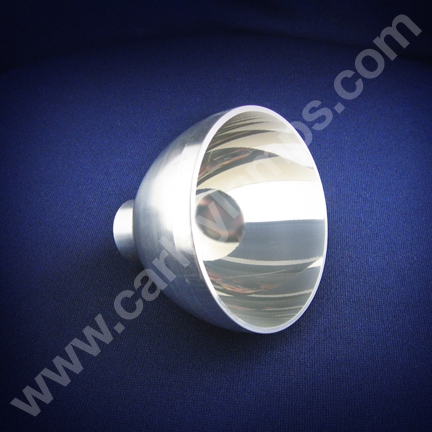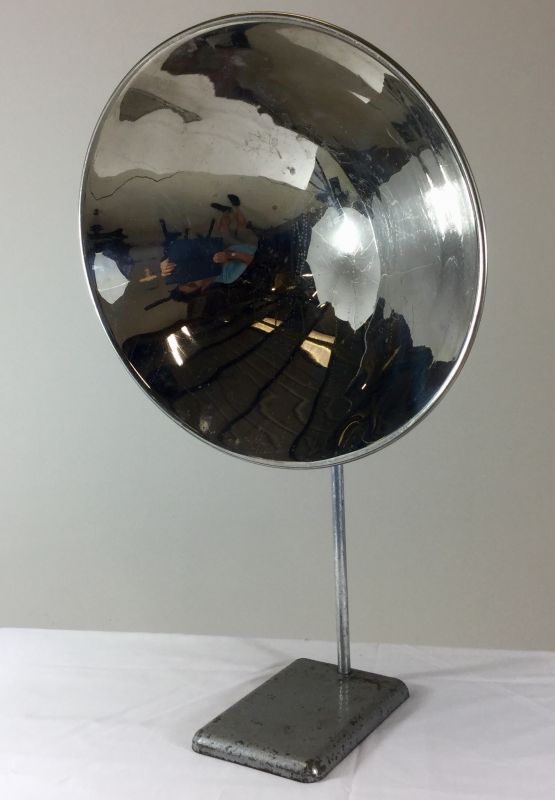
While they don't easily offer slow-cooking capabilities, they can be paired with a retained-heat cooker to prepare foods which call for longer cooking times at lower temperatures, such rice, beans and many other foods. You can also bake breads and other baked-goods in a parabolic cooker. Parabolic solar cookers generally operate at very high temperatures so they are ideal for frying, grilling, and boiling food.
Generally more expensive than panel and box cookers, and requires more storage space. Requires periodic reorientation, often every fifteen minutes, which may be done with a mechanical solar tracking apparatus. High temperatures will allow for food to be fried and grilled, typically 120 - 230 ☌ (248 - 446 ☏). Cooking times are similar to a traditional stovetop. The steam is directed to cooking surfaces in a kitchen and is regulated by valves in order to offer control to the chef. The larger dishes, which can be as wide as five meters in diameter, are generally not used to heat a pot or pan directly, but instead are used to create steam by directing sunlight onto pipes carrying water. Smaller dishes, which are generally around one meter in diameter, are intended to heat a traditional size pot or pan much like how you would cook on a traditional cooktop. The amount of food being cooked and the way in which the heat is used is generally dictated by the size of parabolic dish. These temperatures are significantly higher than what can be reached by a solar box cookers or solar panel cookers and allow the cooking times on a parabolic cooker to be comparable to a conventional stove, such as an electrical or gas burner. They are able to reach high temperatures, 350 ☌ (662 ☏) or higher, which allows them to be used for grilling and frying. Parabolic solar cookers use a parabolic-shaped reflector to direct sunlight to a small area in order to generate heat for cooking. It amplifies and converts signals for better transmission through coaxial cables.The AlSol 1.4 is typical of the parabolic solar cooker styleĪn array of Scheffler parbolic cookers installed on the Shirdi Saibaba temple in Shirdi, Maharashtra, India. A satellite dish collects and focuses signals from satellites to enable long-distance communication. By understanding the functions and capabilities of satellite dishes, we can better appreciate the technology behind the reliable transmission of data and entertainment. From enabling television broadcasts to facilitating internet connectivity, these parabolic reflectors play a crucial role in long-distance communication. Satellite dishes are a fundamental component of modern communication systems. The user’s satellite dish receives this signal and sends it to the satellite receiver, allowing viewers to enjoy a wide range of channels and programming. Broadcasting companies transmit their signal to a satellite, which then beams the signal back to Earth. Direct-to-Home (DTH) Services: Satellite dishes are extensively used for DTH television services. This conversion enables the signals to be transmitted to a satellite receiver inside the user’s home or office. The LNB amplifies the received signals and converts them to a lower frequency to facilitate better transmission through coaxial cables. Amplification: Satellite dishes often incorporate an LNB (Low-Noise Block Downconverter) at the focal point. By collecting and focusing these signals, the dish ensures proper reception and transmission of information. These signals can carry various forms of data, including television broadcasts, internet connectivity, and phone communications. Reception: The main purpose of a satellite dish is to receive incoming signals from satellites. Here are some essential points to understand about satellite dishes: When positioned correctly, the dish collects signals from a satellite located in geostationary orbit, typically around 22,000 miles above the Earth’s equator. It is usually made of aluminum or fiberglass and consists of a dish-shaped surface with a focal point known as the feed horn. 
It enables the transmission of television, internet, and other data signals necessary for long-distance communication.Ī satellite dish, also known as a parabolic reflector, is a curved metal dish designed to focus satellite signals.

A satellite dish is a type of antenna used to receive signals from satellites orbiting the Earth.






 0 kommentar(er)
0 kommentar(er)
